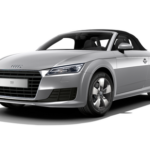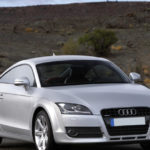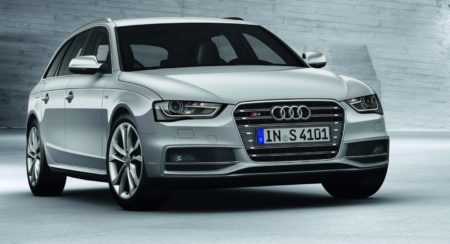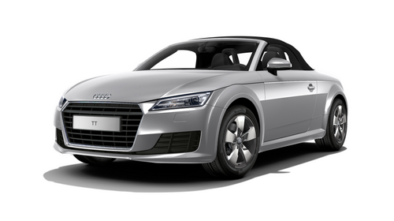Audi TT 8N 1998 - 2006 - Model history
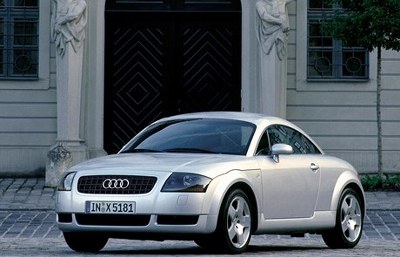
Audi TT 8N
Fun, initially unstable coupe 2 + 2 and roadster on the mechanics of the Golf IV, with a 5-valve turbo gasoline 1.8 T (150 - 240 hp), manual and automatic (DSG 6) mwith gearbox and front and quattro (4 × 4) drive
One of the biggest scandals in the European car industry in recent decades has been hidden by the Audi TT 8N. Unlike Mercedes-Benz A-Class, overturned by Swedish journalist Robert Collin a year earlier when there was more Hollywood spectacular than real danger (an overturned Mercedes nonetheless!), the Audi TT 8N has caused dozens of serious accidents, several tragic ones.
The problem was a combination of unbalanced suspension and poor aerodynamics of the light rear end, which at speeds higher than 200 km / h caused uncontrolled drift (steering), and in difficult situations, overturning. This was confirmed by the famous, two-time rally champion Walter Röhl, who has long been Audi's test driver: - Not bad, but it is too dangerous for a normal driver. When the throttle is removed at 200 km / h, the rear loses stability. Only one man in the world, whose last name is Röhl, can restrain him!
The Tourist Trophy is the hallmark of the famous and dangerous motorcycle race, which has been held since 1907 on the Isle of Man, between England and Ireland. When you look at how attractively the Audi TT 8N is branded, with the label (short for Tourist Trophy), which was worn from 1965 to 1972 by a sporty version of a cute small sedan with an air-cooled 4-cylinder located at the rear - NSU 1000 (until 1967 - NSU 1000 TT, and then NSU TT), it can be complained that it had too many 'ready-made' characteristics.
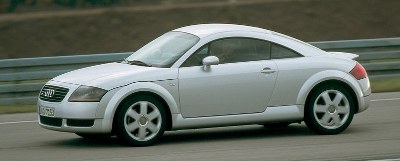
The rear spoiler, which provided enough 'downforce' at high speeds, shows that it is a redesigned and improved model as it has been produced since the spring of 2000.
Issue? The Audi TT 8N was designed a bit boldly, as an attractive, kind of 'fake-athlete', coupe 2 + 2 and two-seater roadster, derived from the Golf IV, actually his (or if you want from the Audi A3, Škoda Octavia, Seat Leone and Volkswagen New Beetle) sports version. The ‘devil’ was in the fact that the turbocharged version was 1.8 T, if you remember it’s the one with 5-valve technology, with 150 hp / 210 Nm, 163 hp / 225 Nm and 180 hp / 235 Nm, and they were already making it. 'dangerous' performance, from 8,6 and 220 km / h to 7,5 and 226 km / h, and at the rear there was a semi-rigid suspension (!) like the basic petrol version of the Golf 1.4 16V with 75 hp.
Only with 4 × 4 (quattro) drive, which was available at an additional cost for the 180 hp version, and as standard for 1.8 T / 224 hp, 280 Nm and a 6-cylinder 3.2 with 250 hp, 320 Nm, was the Multilink at the rear. It was for this model that a special visco-coupling, markings, was developed in 1998 Haldex. The problem with the first front-wheel-drive Audi TT is that, at speeds in excess of 200 km / h, it would often enter from dangerous understeer into dangerous oversteer and deadly pirouette, especially when gas was abruptly taken away.
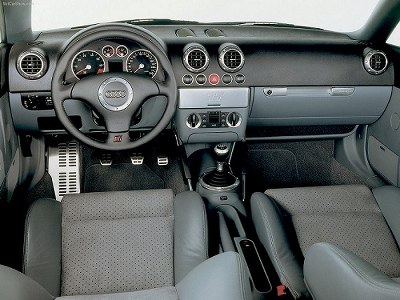
Sporty hinged interior, with low-shell seats, left-foot aluminum support, review instruments and precise 5-speed gearbox give you the pleasure of driving
The solution was offered by ESP, but previously a more efficient transverse stabilizer of the semi-rigid suspension and a spoiler on the boot lid were provided, which provided sufficient aerodynamic load, ie downforce at high speeds. There were also unpleasant and dangerous problems with the guides of the rear Multilink suspension on the quattro, due to corrosion and bearing wear. All this, quite thoroughly, has been solved in a redesigned model since spring 2000.
The Audi TT 8N was built on the A4 platform, which was renamed the PQ2002 in 34, but the Golf and A3 wheelbase was reduced from 2512 to 2429 mm. 4041 in length and 1764 mm wide then it was a C-segment and today it would be B (lower class). A height of 1345 mm contributed more to the relatively low air resistance than the air resistance coefficient of 0,34.
The interior was sporty, with a combination of leather and brushed aluminum, the seats are sporty low, and the suspension was stiffened, so it was a pleasure to drive. In the summer of 2003, the 3.2 VR6 was enriched with 250 hp and a six-speed automatic transmission with six gears (DSG 6).
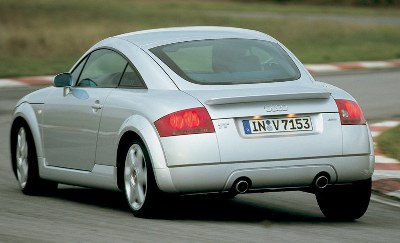
Audi TT 8N
After finishing, especially with the installation of a more massive rear stabilizer, spoiler and ESP, the TT became stable, safe and at high speeds, quite OK.
All this allowed him to endure until 2006, when the second-generation (8J) model, the Current-generation third-generation (FV) model, came out in July 2014. +
Author: Zeljko Marusic
Retrieved from: autoportal.hr
Recommendation of similar texts:

Hi there, I am Mladen and I am an auto enthusiast. I started this blog years ago to help like minded people share information about latest cars, car servicing ideas, used car info, exotic cars, and auto technology. You will find helpful articles and videos on a wide variety of cars - Audi, Mercedes, Toyota, Porsche, Volvo, BMW and much more. Ping us if you have anything cool to share on latest cars or on how to make older cars more efficient, or just want to say hi!

